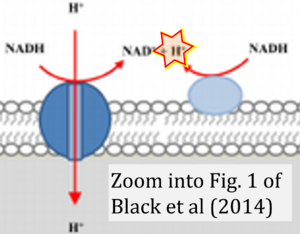Black 2014 Antimicrob Agents Chemother
| Black PA, Warren RM, Louw GE, van Helden PD, Victor TC, Kana BD (2014) Energy metabolism and drug efflux in Mycobacterium tuberculosis. Antimicrob Agents Chemother 58:2491-503. https://doi.org/10.1128/AAC.02293-13 |
Black PA, Warren RM, Louw GE, van Helden PD, Victor TC, Kana BD (2014) Antimicrob Agents Chemother
Abstract: The inherent drug susceptibility of microorganisms is determined by multiple factors, including growth state, the rate of drug diffusion into and out of the cell, and the intrinsic vulnerability of drug targets with regard to the corresponding antimicrobial agent. Mycobacterium tuberculosis, the causative agent of tuberculosis (TB), remains a significant source of global morbidity and mortality, further exacerbated by its ability to readily evolve drug resistance. It is well accepted that drug resistance in M. tuberculosis is driven by the acquisition of chromosomal mutations in genes encoding drug targets/promoter regions; however, a comprehensive description of the molecular mechanisms that fuel drug resistance in the clinical setting is currently lacking. In this context, there is a growing body of evidence suggesting that active extrusion of drugs from the cell is critical for drug tolerance. M. tuberculosis encodes representatives of a diverse range of multidrug transporters, many of which are dependent on the proton motive force (PMF) or the availability of ATP. This suggests that energy metabolism and ATP production through the PMF, which is established by the electron transport chain (ETC), are critical in determining the drug susceptibility of M. tuberculosis. In this review, we detail advances in the study of the mycobacterial ETC and highlight drugs that target various components of the ETC. We provide an overview of some of the efflux pumps present in M. tuberculosis and their association, if any, with drug transport and concomitant effects on drug resistance. The implications of inhibiting drug extrusion, through the use of efflux pump inhibitors, are also discussed.
• Bioblast editor: Gnaiger E
Hydrogen ion ambiguities in the electron transfer system
Communicated by Gnaiger E (2023-10-08) last update 2023-11-10
- Electron (e-) transfer linked to hydrogen ion (hydron; H+) transfer is a fundamental concept in the field of bioenergetics, critical for understanding redox-coupled energy transformations.
- However, the current literature contains inconsistencies regarding H+ formation on the negative side of bioenergetic membranes, such as the matrix side of the mitochondrial inner membrane, when NADH is oxidized during oxidative phosphorylation (OXPHOS). Ambiguities arise when examining the oxidation of NADH by respiratory Complex I or succinate by Complex II.
- Oxidation of NADH or succinate involves a two-electron transfer of 2{H++e-} to FMN or FAD, respectively. Figures indicating a single electron e- transferred from NADH or succinate lack accuracy.
- The oxidized NAD+ is distinguished from NAD indicating nicotinamide adenine dinucleotide independent of oxidation state.
- NADH + H+ → NAD+ +2{H++e-} is the oxidation half-reaction in this H+-linked electron transfer represented as 2{H++e-} (Gnaiger 2023). Putative H+ formation shown as NADH → NAD+ + H+ conflicts with chemiosmotic coupling stoichiometries between H+ translocation across the coupling membrane and electron transfer to oxygen. Ensuring clarity in this complex field is imperative to tackle the apparent ambiguity crisis and prevent confusion, particularly in light of the increasing number of interdisciplinary publications on bioenergetics concerning diagnostic and clinical applications of OXPHOS analysis.
Labels:



